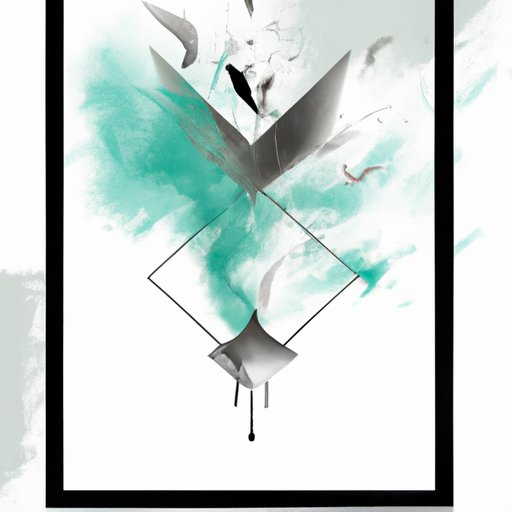Introduction
Digital art is a form of art created through the use of digital technology such as computer software, graphic design programs, and 3D modeling programs. Digital art can be used to create a variety of visual media from paintings and illustrations to animations and interactive works. With the rise of digital art, many artists are now looking to print their digital artwork in order to make it more accessible and tangible. This article will provide a comprehensive guide on how to print digital art, including the steps involved, popular platforms for printing digital art, tips for optimizing digital art for printing, and examples of printed digital art.
Step-by-Step Guide to Printing Digital Art
Printing digital art is a relatively straightforward process, but there are several steps that must be taken in order to ensure a high-quality result. The first step is to choose a platform for printing your digital art. There are several popular options, including online printing services, local print shops, and at-home printers. Once you have chosen a platform, the next step is to prepare the file for printing. This includes selecting the appropriate resolution, adjusting the color settings, and utilizing templates to ensure the best possible outcome.
Choosing a Platform
The first step in printing digital art is to choose a platform for printing. There are several popular options, each with its own advantages and disadvantages. Online printing services offer convenience and affordability, as well as a wide range of printing options. Local print shops provide higher quality prints and personalized service, but may be more expensive. At-home printers are an affordable option, but may not produce the highest quality prints.

Preparing the File for Printing
Once you have chosen a platform for printing your digital art, the next step is to prepare the file for printing. This includes selecting the appropriate resolution, adjusting the color settings, and utilizing templates to ensure the best possible outcome. When choosing the resolution, it is important to select a resolution that is large enough to ensure a high-quality print, but not so large that it takes too long to render or causes the file size to become too large. Additionally, it is important to adjust the color settings to match the specific printer you are using, as different printers may require different color settings.
Choosing a Printer
The next step in printing digital art is to choose a printer. When selecting a printer, it is important to consider factors such as cost, speed, resolution, and print quality. Additionally, it is important to research the types of paper and inks that are compatible with the printer, as this can have a significant impact on the final result. Finally, it is important to consider the printing environment and ensure that the printer is properly maintained and operated.
Finalizing the Print
Once the file has been prepared and the printer has been chosen, the next step is to finalize the print. This includes ensuring that the file is correctly formatted for the printer and that all the necessary adjustments have been made. Additionally, it is important to check the print quality and make any necessary adjustments before printing the final product.

Popular Printing Platforms for Digital Art
There are several popular platforms for printing digital art, each with its own advantages and disadvantages. Online printing services such as Shutterfly and Vistaprint offer convenience and affordability, as well as a wide range of printing options. Local print shops such as Kinkos and FedEx Office provide higher quality prints and personalized service, but may be more expensive. At-home printers such as Epson and Canon are an affordable option, but may not produce the highest quality prints.

Tips for Optimizing Digital Art for Printing
In order to ensure a high-quality print, it is important to optimize the digital art for printing. This includes choosing the appropriate resolution, adjusting the color settings, and utilizing templates. When choosing the resolution, it is important to select a resolution that is large enough to ensure a high-quality print, but not so large that it takes too long to render or causes the file size to become too large. Additionally, it is important to adjust the color settings to match the specific printer you are using, as different printers may require different color settings. Finally, it is helpful to utilize templates to ensure that the digital art is correctly formatted for the printer.
Showcasing Examples of Printed Digital Art
Once the digital art has been printed, there are many ways to showcase it. Canvas prints are a popular way to display digital art, as they can be hung on walls and easily moved. Posters are another popular option, as they can be framed and hung on walls or placed on shelves. Giclée prints are a more luxurious option, as they are printed on high-quality archival paper with archival inks. These prints are ideal for displaying digital art in galleries or museums.
Conclusion
This article provided a comprehensive guide on how to print digital art. It covered the step-by-step process of printing digital art, popular platforms for printing digital art, tips for optimizing digital art for printing, and examples of printed digital art. For further information on printing digital art, it is recommended to consult with a professional printing service or research additional resources on the subject.
(Note: Is this article not meeting your expectations? Do you have knowledge or insights to share? Unlock new opportunities and expand your reach by joining our authors team. Click Registration to join us and share your expertise with our readers.)
